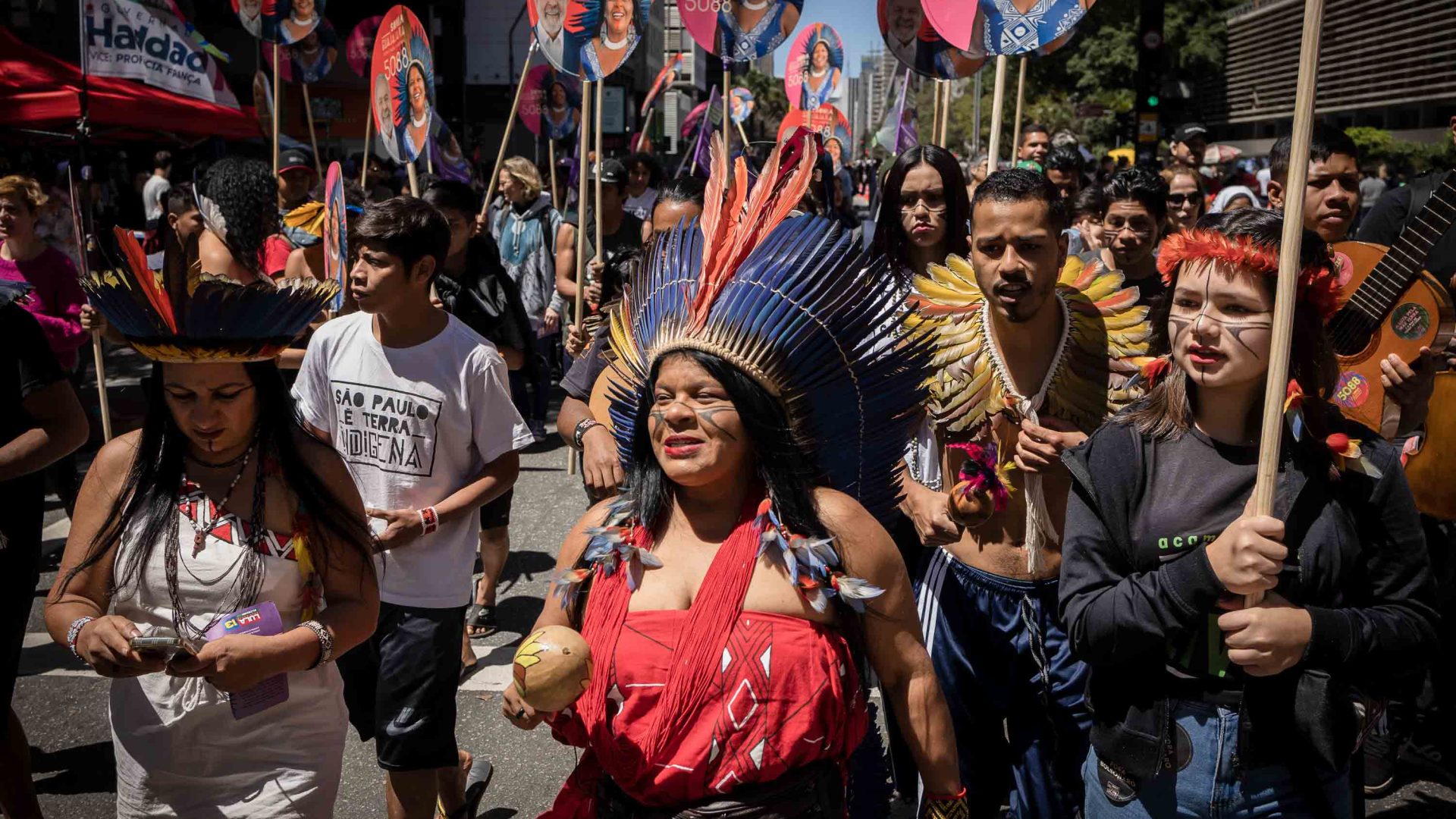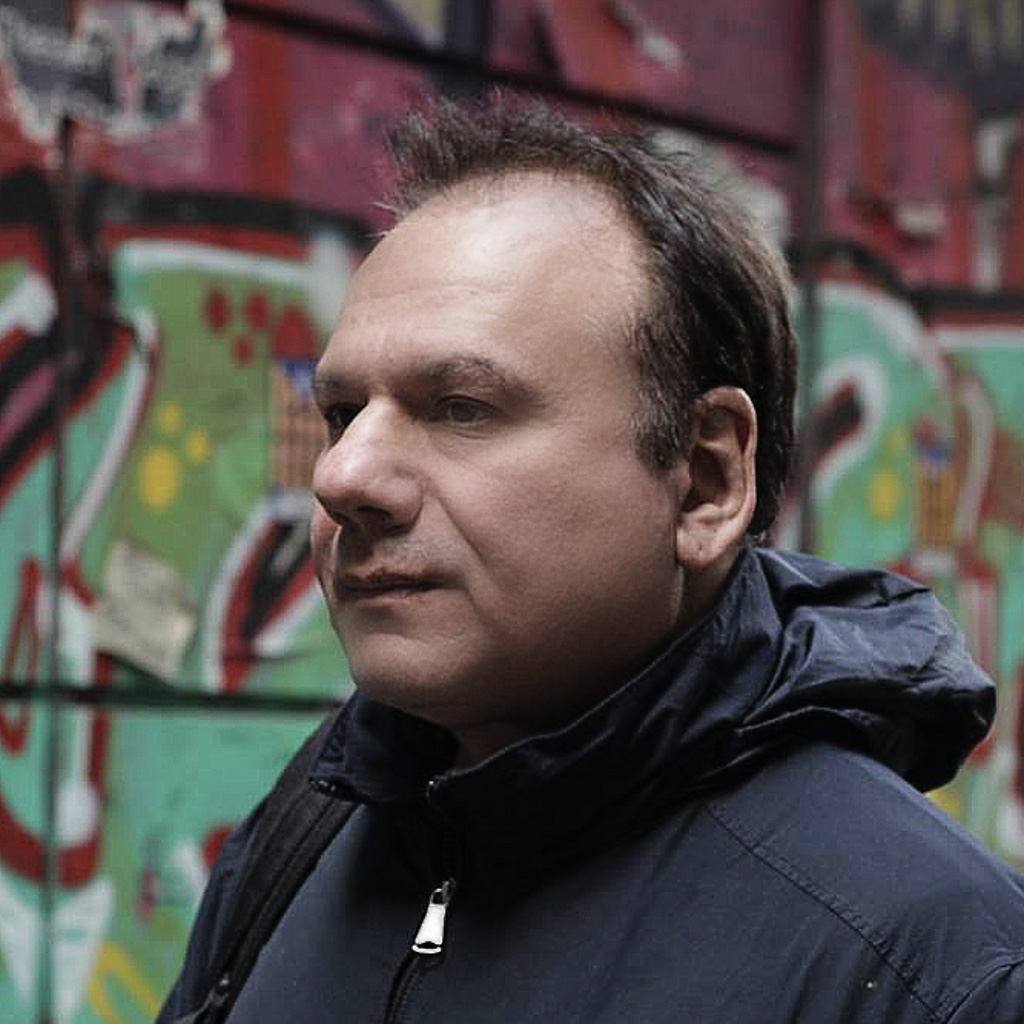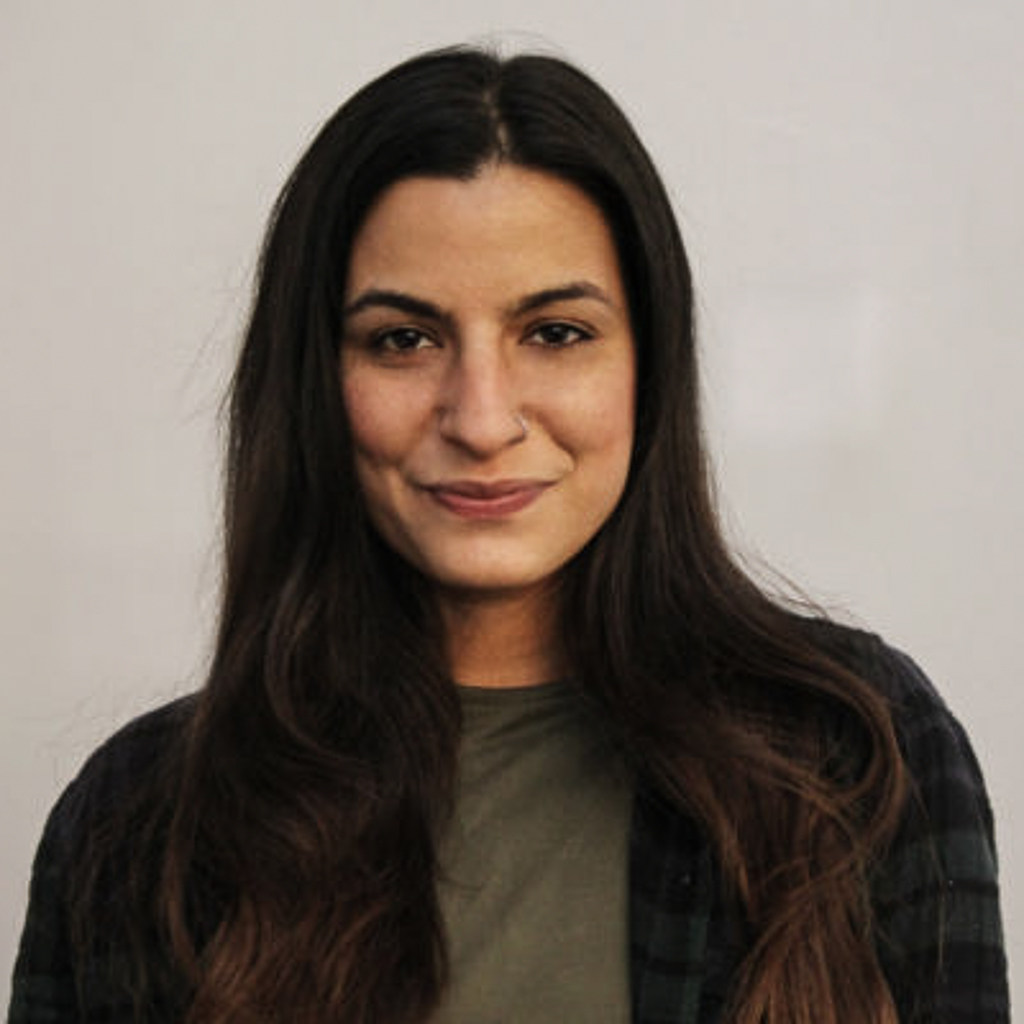
In a period of global climate emergency and political challenges in Brazil, young Indigenous and Afro-Brazilian environmental activists are advocating for change with the biggest platform in history: Social media accounts.


In a period of global climate emergency and political challenges in Brazil, young Indigenous and Afro-Brazilian environmental activists are advocating for change with the biggest platform in history: Social media accounts.
Tucked away in the maze of canals and gothic buildings in Venice, a theater full of patrons settle into their seats, preparing to watch The Territory, a documentary that has toured around the world (even winning the Special Jury Award for Documentary Craft as well as the World Cinema Documentary Audience Award at the Sundance Film Festival).
The film is here at the 79th Venice International Film Festival, detailing the story of Indigenous leaders fighting back against the invasion of Brazilian farmers in a protected area of the Amazon. But before the projector begins buzzing and the room goes dark, a striking woman with long black hair pulled back at the nape of her neck and wearing a green pantsuit takes the stage.
Zaya, an Indigenous activist and model from Brazil, introduces the film to a hushed crowd.
Zaya was born and raised in the Amazon rainforest. As a child, she was forced to flee her home with her mother and grandmother, due to invasions and threats from loggers and fazendeiros (farmers) in their territories. Her grandmother took refuge in a small isolated village in the state of Rondônia. But Zaya, 16 years old at the time, decided instead to migrate to a larger city with hopes of a better future.

During that same time, which coincided with the presidential mandate of Jair Bolonsaro, deforestation rapidly increased in the Amazon. Under Bolsonaro, agriculture, mining and logging industries were given a carte blanche to exploit vast swathes of the Amazon. Zaya decided she couldn’t just stand by and watch as the situation for the one million Indigenous people and three million species of plants and animals in the Amazon deteriorated.
“I really needed to do something,” she says. “I started an Instagram account to raise awareness for my people, who are increasingly endangered.”
Today, Zaya represents a generation of environmental activists that is using social media to amplify a dramatic plea for the conservation and defense of the earth. Zaya’s Instagram account now reaches over 31,600 followers with messages about social justice, conservation and environmentalism. “The planet does not have enough resources for us to continue living as if there would be no tomorrow,” she writes.
Her career as a model has allowed her to travel in Brazil and Europe, with invites to Venice, Fashion Week in Milan and events in Paris. Each time, Zaya brings a simple message: “We need to protect our Indigenous communities, who are the real guardians of nature and of our future.” The irony of the industry is not lost on Zaya. Despite her newfound influence, she has not stopped confronting the fashion industry, noting that it is “the second most polluting industry on the planet.”
Zaya isn’t alone in her work to bring awareness and action to the crossroads of Indigenous rights and environmentalism. Other young women in the space see an opportunity to work together to bring change.
“We need to be like one family, fighting for our territories and the survival of future generations,” says Raquel Yarikazu Xipaya. A 22-year-old Indigenous activist, Xipaya was born and raised on the shores of the Xingu river, one of the largest rivers in the Amazon basin. As a child, she witnessed the construction of the world’s fourth-largest hydropower plant, despite protests from local Indigenous peoples.
“It is honestly very difficult to feel like a foreigner in your own country.”
- Raquel Yarikazu Xipaya
In 1989, Indigenous leader Tuira Kayapò attracted global attention when she brandished a machete in the face of a government official who was trying to convince leaders like her to accept the project. Following this, Xipaya’s father often took his young daughter to the protests in Belo Monte. They were up against a giant. The plant has a production capacity of 11,233 megawatts—enough to meet roughly 10 percent of the national demand.
Despite strong resistance to the plant and two decades of petitions, the project was approved in 2010 by president Luiz Inácio Lula da Silva. “The water submerged our homes and we were forced to relocate to Altamira,” Xipaya says. “Many of the trees died. Fish decreased by two-thirds because they couldn’t eat what was produced by the trees. Our Indigenous fathers warned us about the consequences of destroying the ecosystems and biodiversity that they had taken care of for millennia.”
Xipaya recalls the moment when her mother was expelled from her village. “They came with a land title and told my family that we had to leave,” she says. “At that moment I realized how important it is to know the laws. These injustices convinced me that I couldn’t stay silent.” Her family’s experience inspired her to move to Belém, about 500 kilometers from her hometown of Altamira, to study Indigenous law.
While studying, Xipaya created an Instagram account to amplify her voice in defense of the Amazon’s people. The account grew a substantially large following quickly, but the growth came with challenges. “As an Indigenous woman, I feel particularly exposed to various forms of hate-speech,” she says. “During Bolsonaro’s mandate, I believe people felt even more free to express their verbal violence.”
Xipaya, Zaya and many other Indigenous influencers advocated for Lula’s victory in the latest elections. This is despite the fact that “Lula owes a historical debt to the people of Xingu because of the dam,” she says. “He is however the only one willing to have a dialogue with Indigenous people. I attended his speech in Belém and I believe he wants to involve us in his government.”
Xipaya speaks about the importance of active political participation, as well as creating positive narratives in defense of the people of the Amazon. Changing the way things are is more important to Xipaya than fear of the current political situation in her home. “I know that at any moment I can suffer from racist attacks and violence,” she says. “It is honestly very difficult to feel like a foreigner in your own country.”
Jahzara Oná, an 18-year-old Afro-Brazilian, grew up in Sao Paulo’s Pantanal favela. As a child, she became used to witnessing her home flood. Today, she is able to contextualize this inequitable disaster as “environmental racism,” giving it a name.
“The more vulnerable we are, the more we are affected,” Oná says. “When there are floods, it’s not the rich who suffer, it’s us. It’s not the future that scares us, it’s the present.”
[Indigenous women are] “finally managing to take the political space we deserve. We were silenced for too long. Now it’s time to raise our voice.”
- Sônia Guajajara, activist
Jahzara, who I met in Egypt with the Brazilian delegation of Fridays For Future at COP27, said she began to fight because she felt that youth like her are invisible. Her father, who works in a textile factory, and her mother, who works as a cleaner, are proud of what she is doing. “I decided to use my social media to shed light on the issues Black people are facing in Brazil, but also to care about all the other struggles of justice in our country,” she says. “I am inspired by women with similar struggles.”
Each of these women also share a deep sense of admiration for Sônia Guajajara, an Indigenous activist who ran on Luiz Inacio Lula da Silva’s presidential ticket and was elected federal deputy in São Paulo.
Guajajara is the second Indigenous woman in Brazil’s history to enter the Chamber of Deputies. Considered one of the world’s 100 most influential people by Time Magazine in 2022, Sônia says that Indigenous women are “finally managing to take the political space we deserve. We were silenced for too long. Now it’s time to raise our voice.”
During COP27, Lula officially proposed to organize the 2025 climate conference in the Amazon, after running on an electoral promise of “zero deforestation.” On the sidelines of the conference, Jahzara, who was barely able to finance her trip to Egypt, was taking it all in.
“Despite being the most affected people by climate change in Brazil, young Black people in the favelas are still definitely underrepresented,” she says. “The recent changes in Brazil come with great expectations. Let’s hope that effective measures will be taken instead of the classic empty promises.”

Paloma de Dinechin is a French investigative journalist and documentary producer with a focus on Latin America, and is part of Forbidden Stories, a consortium of journalists that pursues the work of threatened reporters. Her articles have been published in Le Monde, Liberation, Die Zeit, Washington Post, Expresso, Knack, El Faro and others.








Can't find what you're looking for? Try using these tags: